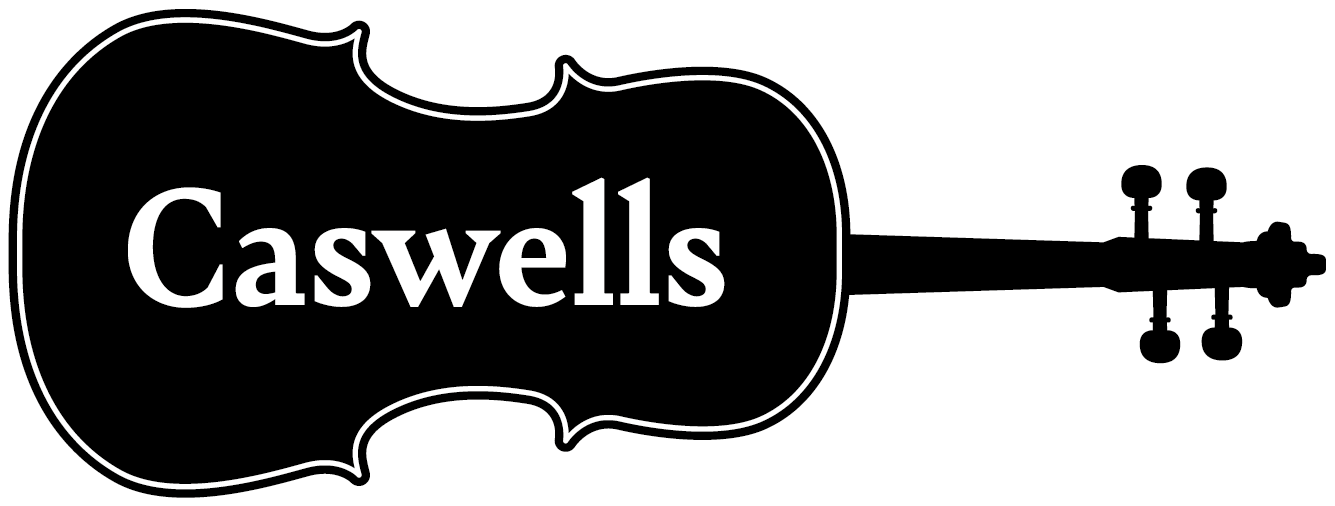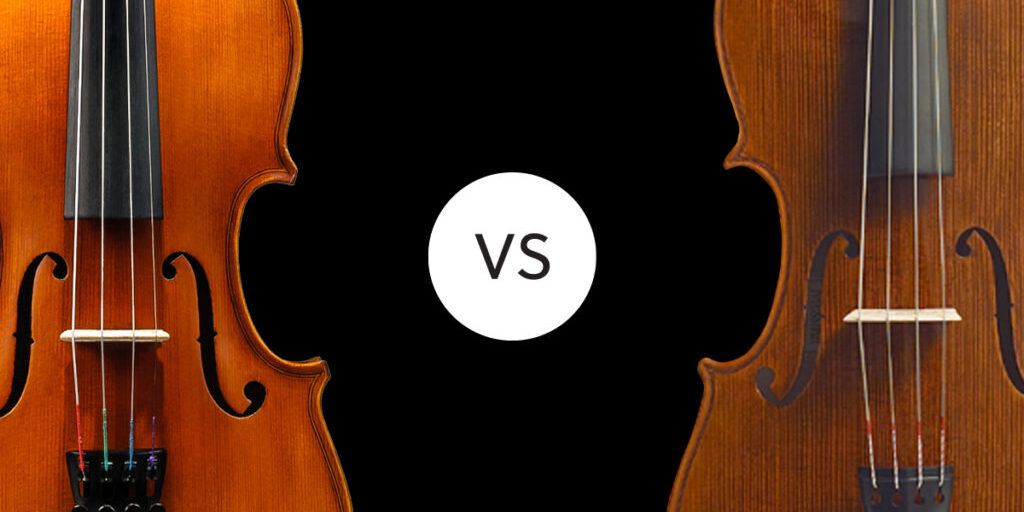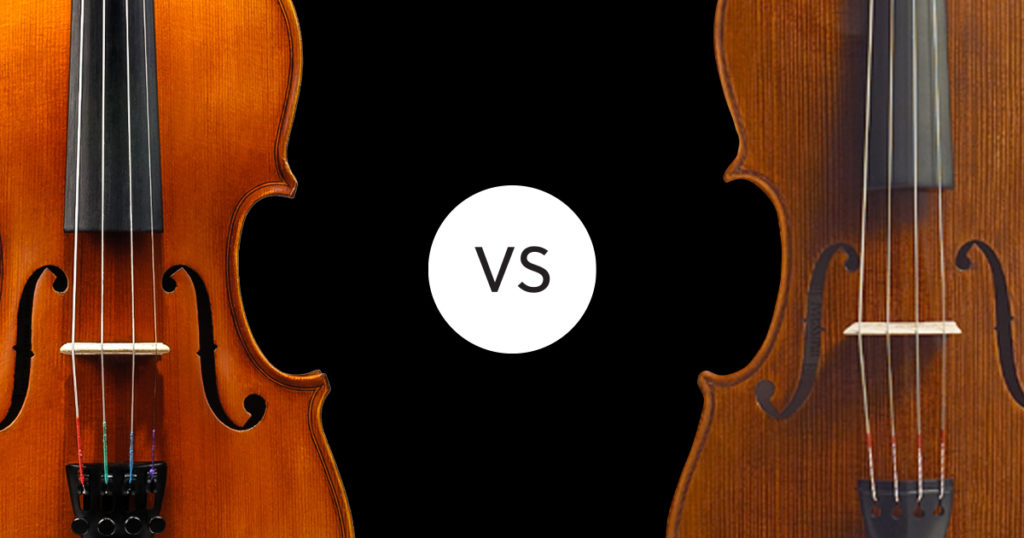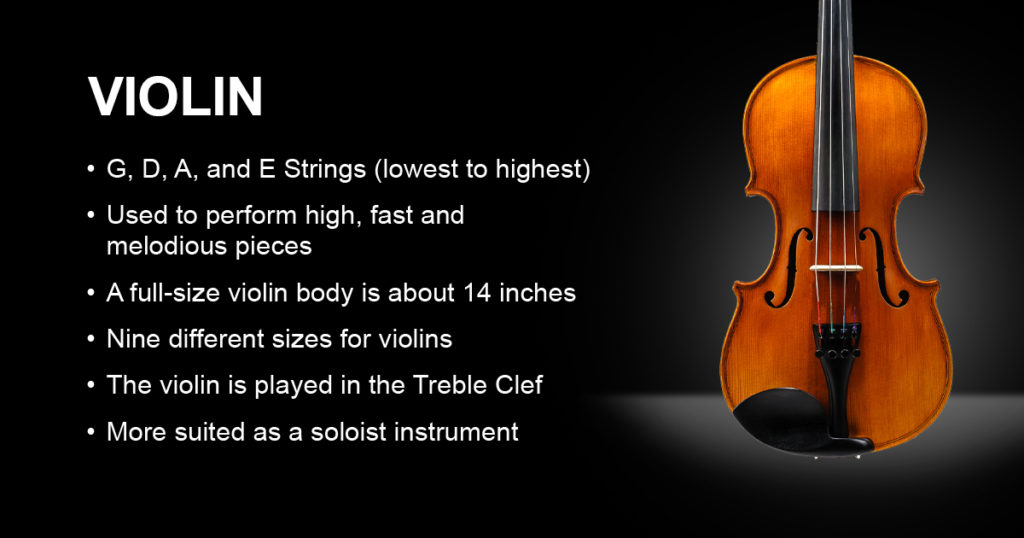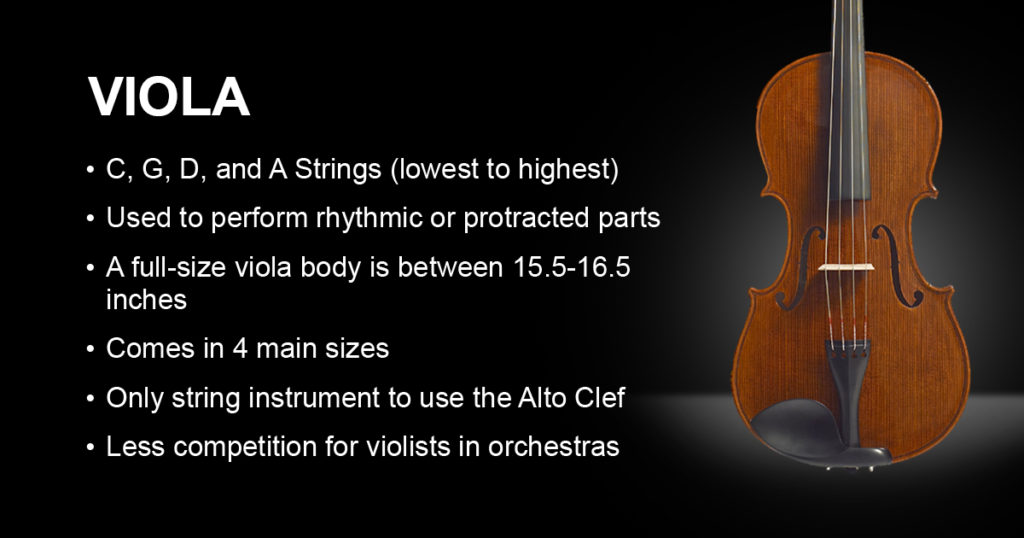The string family of instruments has a rich and respected legacy in the world of music. Although not the oldest pedigree of string instrument, the violin family now forms the backbone of the modern symphony orchestra and choosing an instrument from this family is a popular choice for beginners and intermediate level players alike.
The basic violin family is made up of four instrument voices: cello, double bass, violin and viola. Wait…violin and viola, but they’re the same thing, right? If you’re not a musician yourself or have never seen/heard the instruments compared then you can’t be judged for thinking this.
However, if your child expresses an interest in one and not the other then it’s time to get on board with the less than nuanced differences between these instruments. Understanding the unique variations can help you support your child’s choice more constructively. Find out more below.
Size
Of the two instruments, the violin is the smallest. Measurement wise, a full-size violin body is about 36 cm (14 inches), but a full-size viola body is typically somewhere between 39 and 41 cm (15.5-16.5 inches). The body of the viola is also wider and deeper than the violin.
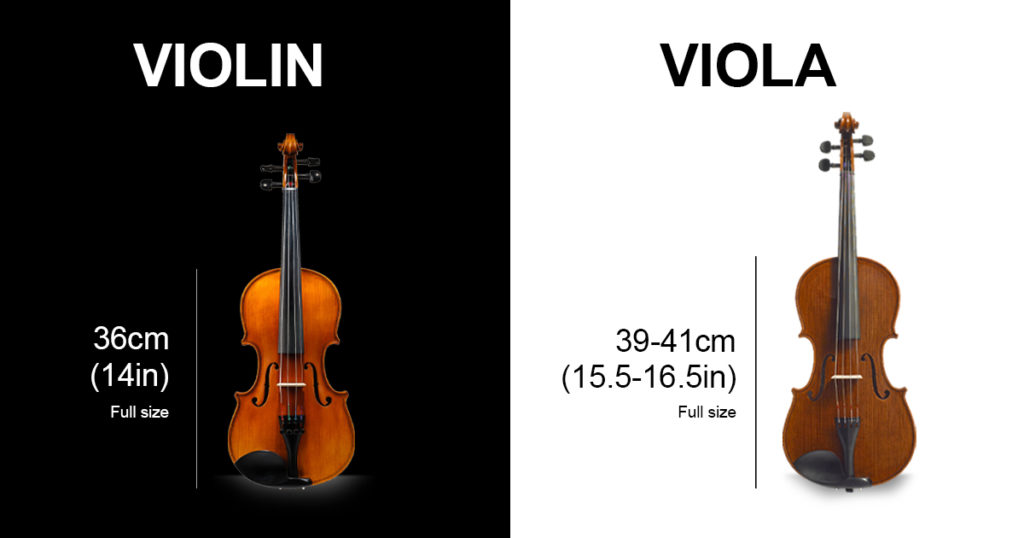
Bow
One of the biggest differences that you can also observe is that these two instruments cannot share a bow. The strings of a viola are heavier and need a bow with more weight to create the darker richer sounds.
Violin bows are, on average, a whole 10 grams lighter than a viola bow.
A little harder to spot is the difference between the bow’s ‘frog’ (that’s the part of the bow that players grip). On the viola bow, the frog is chunkier and often curved, compared to the straight edge on a violin bow. This impacts how the musician draws the bow across the strings, changing the sound created.
Strings
Typically, violins and violas both only have four strings (electric variations can have more).
Violin strings are tuned G, D, A, and E, with E being the highest, and G being the lowest. The strings of a violin are tuned in fifths.
The Viola is tuned one fifth lower than the violin. Viola strings are C, G, D and A strings, with A being the highest, and C being the lowest. The strings of a viola are also tuned in fifths. They are also thicker and longer than their violin string counterparts.
Therefore, when compared to the violin, the viola produces notes of a lower range and this lower note range is often the choice of players wanting to play the alto voice in the orchestra.
Sound
The sounds produced by the thicker strings of the viola are slower, deeper and more mellow than the violin. In an orchestral setting, the viola is the harmonic accompaniment. Ask any violist and they’ll point out that the sound of their instrument isn’t necessarily prominent in a full orchestra.
Yet, it doesn’t make the harmonising tones of their notes any less essential. Volume isn’t everything, and violas are key inclusions for balancing out the voices of other string instruments such as violins and cellos.
In an orchestra, the violin is the highest-pitched instrument, making them the obvious choice for carrying melody line and for solo parts. The notes are brighter and sweeter than a viola; one of the reasons it’s such a popular solo instrument as well as an ensemble one.
And there are a lot of violinists in an ensemble. Orchestras actually have first and second violinist sections, meaning their numbers far outweigh all other instrument groups. No wonder they’re so much louder and steal all the spotlight!
Clef
A Clef is a musical symbol used to indicate the pitch of written notes. Placed on a stave (the parallel lines you see on sheet music), the clef indicates the name and pitch of the notes on one of the lines.
The viola is a mid-range alto voiced instrument and is the only string instrument to use the Alto Clef for notation.
The violin is played in the Treble Clef. Violins are known for being the “soprano” (highest) voice of an orchestra or ensemble.
Alto Clef is not some mysterious, difficult to conquer form of reading music (all sheet music looks like alien jargon to non-musicians after all). Switching between the clefs can be difficult but can be done should your child ever wish to swap between the instruments.
Which is easier to play?
This isn’t a simple answer. The violin family is notoriously difficult to learn given the amount of precision and focus that goes into creating a tone that doesn’t make cats wail. Not only does the young musician need to conquer the positioning of their hold but also the movement of their fingers…all while running a bow across the strings in a specific way.
The two instruments do share a lot of similarities but there’s no easy route to either. The viola is the heavier and richer sounding of the two instruments requiring a stronger built player with above-average hand size.
How to choose which is best for you
The choice will entirely depend on personal preference and where your child wants to take their instrumental journey. Violins are more versatile and are used a lot in more modern music but there’s less competition for the viola player in orchestras.
The viola requires more reach and strength but if you can master the violin, you can often swap over to the viola if required. If your child desires the spotlight, the violin is probably best but it will always be a climb full of competition and challenges.
If the spotlight isn’t everything and your child could happily contribute to being part of a greater whole, then the viola makes more sense. Choosing a viola is about choosing to move away from the crowded world of violinists, and notoriously, having a sense of humour!
Why not have your child try out one of these instruments for themselves? Our store in Banbury is open Monday through Friday from 8 am–5 pm. We advise booking a slot with us, so contact Caswell’s Strings today on 01280 707140 or email sales@caswellsstrings.com
CONTACT US TODAY
This article was checked by the director of Caswell’s Strings, Lance Tunley who is an experienced purveyor of stringed instruments and accessories with over 30 years of experience in the field.

